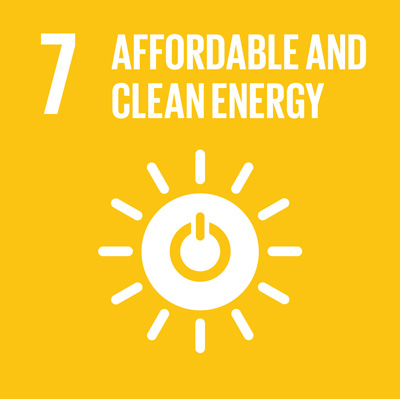In our blog last month, we wrote about UNLEASH, the weeklong global innovation lab we attended in Singapore. We spent a week with 1,000 fellow young professionals and students from 106 countries developing innovative ideas for tackling the United Nations Sustainable Development Goals.
This month, we are excited to share a bit about the solutions we conjured up with our teams.
Greg’s project: Increasing energy access for displaced populations
 I was a part of the broader team working on solutions to SDG 7: Affordable and Clean Energy for All. My group, dubbed Team Fighting Broccoli, was composed of an ecobanking expert who had spent a few years working in Mongolia, a refugee studies Ph.D. from Morocco, an impact investor from India and me. Based on our common interests, past work experiences and expertise, we decided to tackle the challenge of increasing energy access to massive and rapidly displaced populations such as those affected by climate-related disasters.
I was a part of the broader team working on solutions to SDG 7: Affordable and Clean Energy for All. My group, dubbed Team Fighting Broccoli, was composed of an ecobanking expert who had spent a few years working in Mongolia, a refugee studies Ph.D. from Morocco, an impact investor from India and me. Based on our common interests, past work experiences and expertise, we decided to tackle the challenge of increasing energy access to massive and rapidly displaced populations such as those affected by climate-related disasters.
Our idea stemmed from a team member’s experience in Mongolia, where multiple abnormally cold winters led to massive livestock die-offs and loss of livelihood for nomadic populations. The resulting mass migration to the capital nearly doubled the population of Ulaanbaatar in just two years, leading to widespread public health and environmental issues, largely attributed to burning dirty coal in densely populated areas instead of expansive rural landscapes.
While this event was specific to Mongolia, rapid urbanization and mass migration due to natural or man-made disasters are not. These displaced populations face different challenges from officially recognized refugees, and they lack the resources that the UN and other aid organizations provide. Furthermore, the solutions to rapid, potentially short-term urbanization are distinct from the permanent infrastructure solutions necessary in existing peri-urban areas.
In the spirit of good tech start-ups ending their names with “i,” we created the framework for a company we called NUFi: New Urban Fuel Informatics. NUFi sought to preempt the informal and often exploitative fuel distribution networks that quickly develop in these areas. Inspired by the Coca-Cola model of distribution, we arrived at a company that employs micro-entrepreneurs to create a formalized distribution network that allows for accurate data collection on fuel consumption and pricing. Our short-term intent was not to create a transformative clean fuel solution, but to create a solution that provides market access and consumer data to micro-entrepreneurs with clean energy solutions, who have commonly relied on nonprofits for distribution. We saw our solution as a necessary enabler of clean energy within rapidly forming urban areas.
Ellen’s project: Land tenure for smallholder farmers in Burkina Faso
![]() Team TerrAqua spent an intense week exploring solutions to water scarcity for smallholder farmers in Burkina Faso, a landlocked country in the Sahel region of West Africa. I had the privilege of working with team members from Burkina Faso, Mexico, Switzerland, Brazil and Canada, with diverse backgrounds in water resources engineering, green infrastructure and integrated water management.
Team TerrAqua spent an intense week exploring solutions to water scarcity for smallholder farmers in Burkina Faso, a landlocked country in the Sahel region of West Africa. I had the privilege of working with team members from Burkina Faso, Mexico, Switzerland, Brazil and Canada, with diverse backgrounds in water resources engineering, green infrastructure and integrated water management.
As we dug into this issue’s root causes, we discovered that many green infrastructure solutions, such as clay-lined reservoirs to capture and store rainwater, exist—but, because many smallholder farmers do not have formal ownership over the land they farm, they are discouraged from investing their limited resources in these solutions. This realization planted the seed for helping farmers secure land tenure, which could have myriad other positive impacts on top of removing a barrier to water security.
We conceptualized a business that would provide land boundary mapping services to fill the data gap in Burkina Faso’s recently established land tenure initiative. We proposed to fund our endeavor by collecting additional data during the mapping process to sell to businesses (particularly in the cotton industry, as cotton is Burkina Faso’s largest agricultural export), NGOs and government agencies.
Then we discovered that this solution has been used before, in both the public and private sectors. It was a bit disheartening to learn that our solution wasn’t as innovative as we hoped, but at the same time, it was exciting to validate our early-stage idea with success stories from other markets, such as Meridia, which documents land boundaries in Ghana, Malawi and Indonesia and sells data to companies like Unilever, which have an interest in increasing supply-chain visibility for commodities like cocoa.
The common thread
Neither of our projects was a direct or immediate solution. Both solutions addressed a barrier that contributes to a problem rather than addressing the problem head on. In Greg’s case, making market access and consumer data available would allow other energy businesses to meet the demand for fuel in areas of rapid urbanization. In Ellen’s case, securing land tenure for rural farmers would mitigate their risk to invest their own resources in water infrastructure. Both teams focused on systems-level solutions, and while this type of approach may not yield instant results, it has the potential for scalable, sustainable, long-term impact. Furthermore, both of our solutions built on the self-sustainability associated with using for-profit business models to drive sustainable development.
Thank you to UNLEASH, all its sponsors and the Erb Institute for making it possible for us to participate.